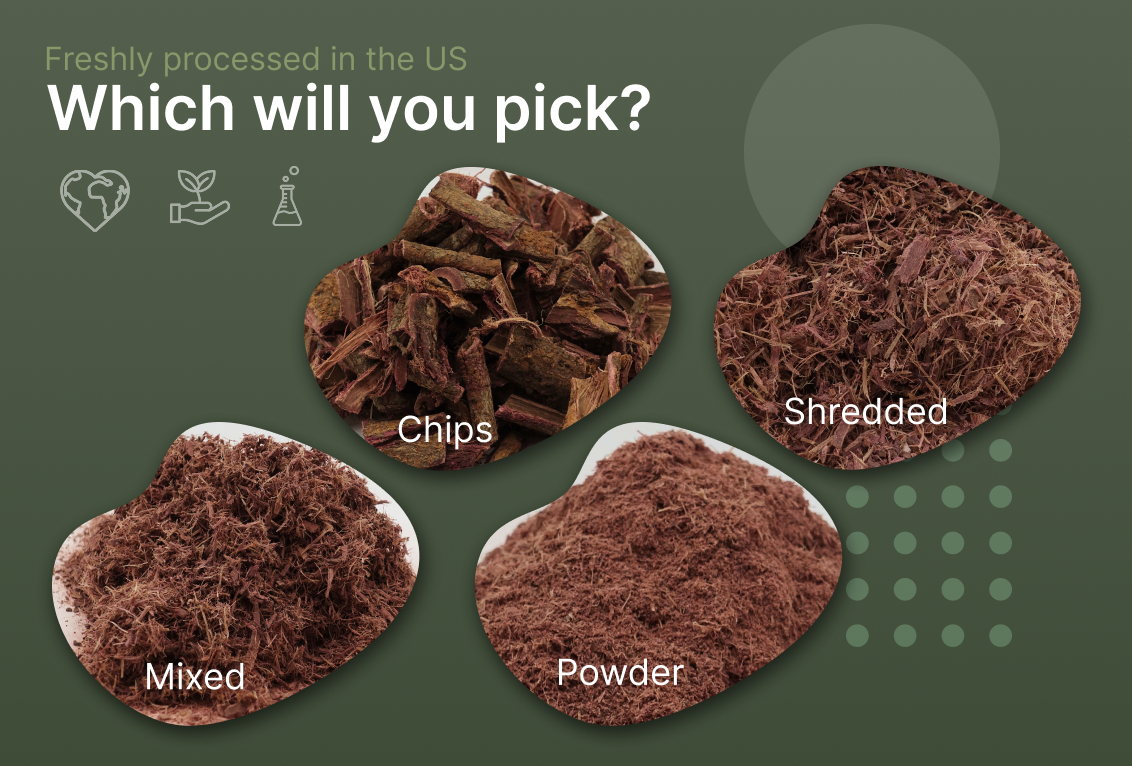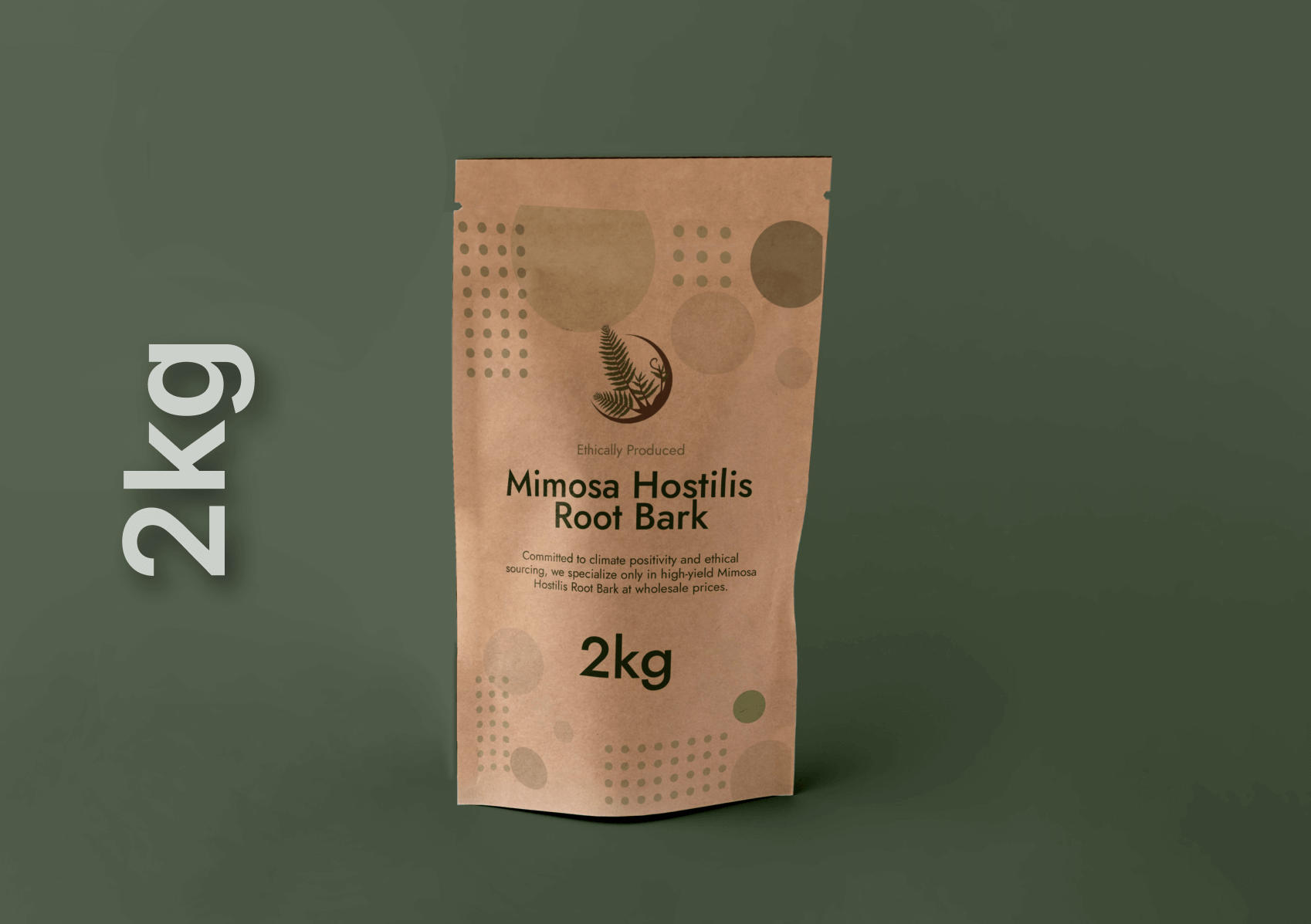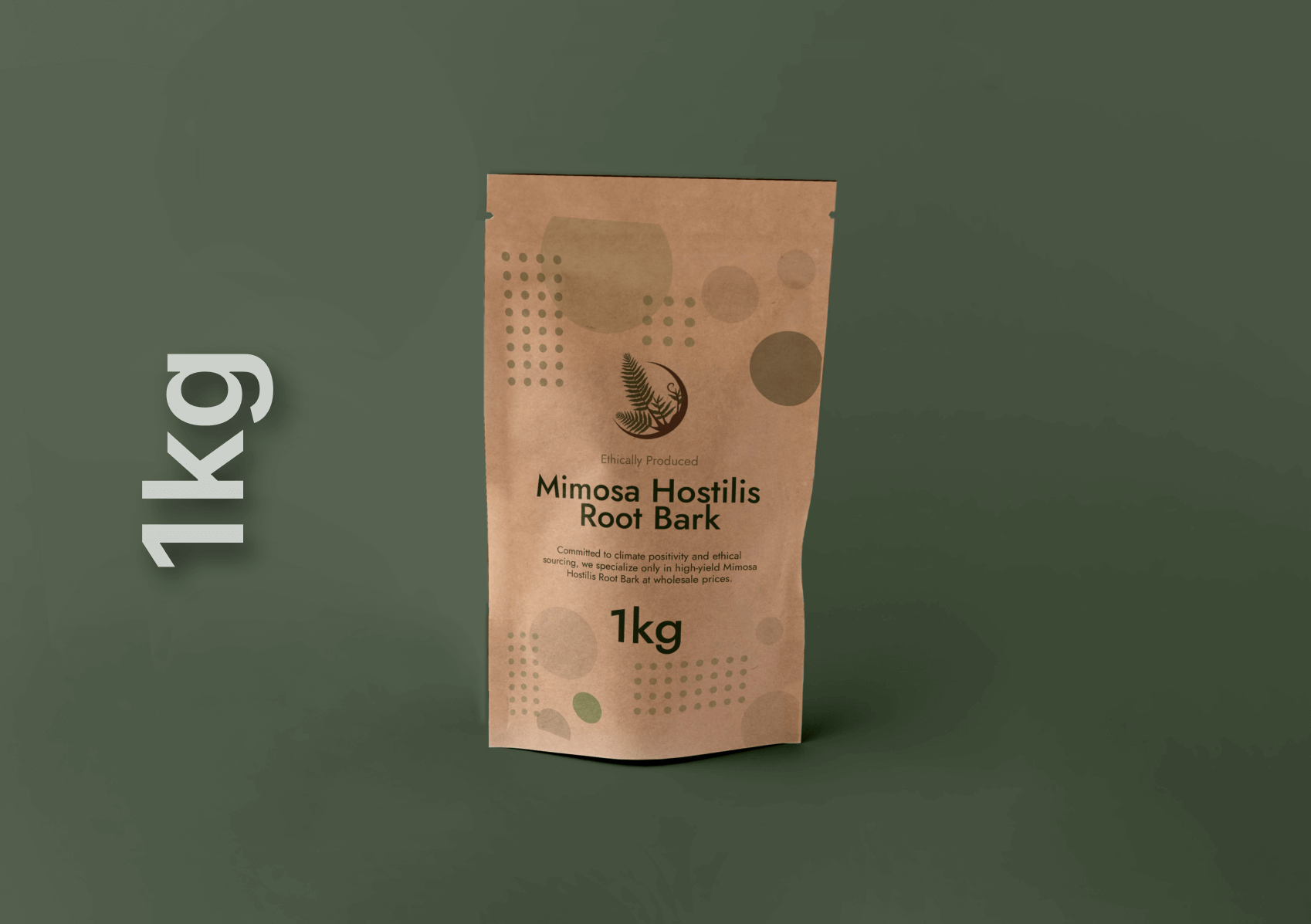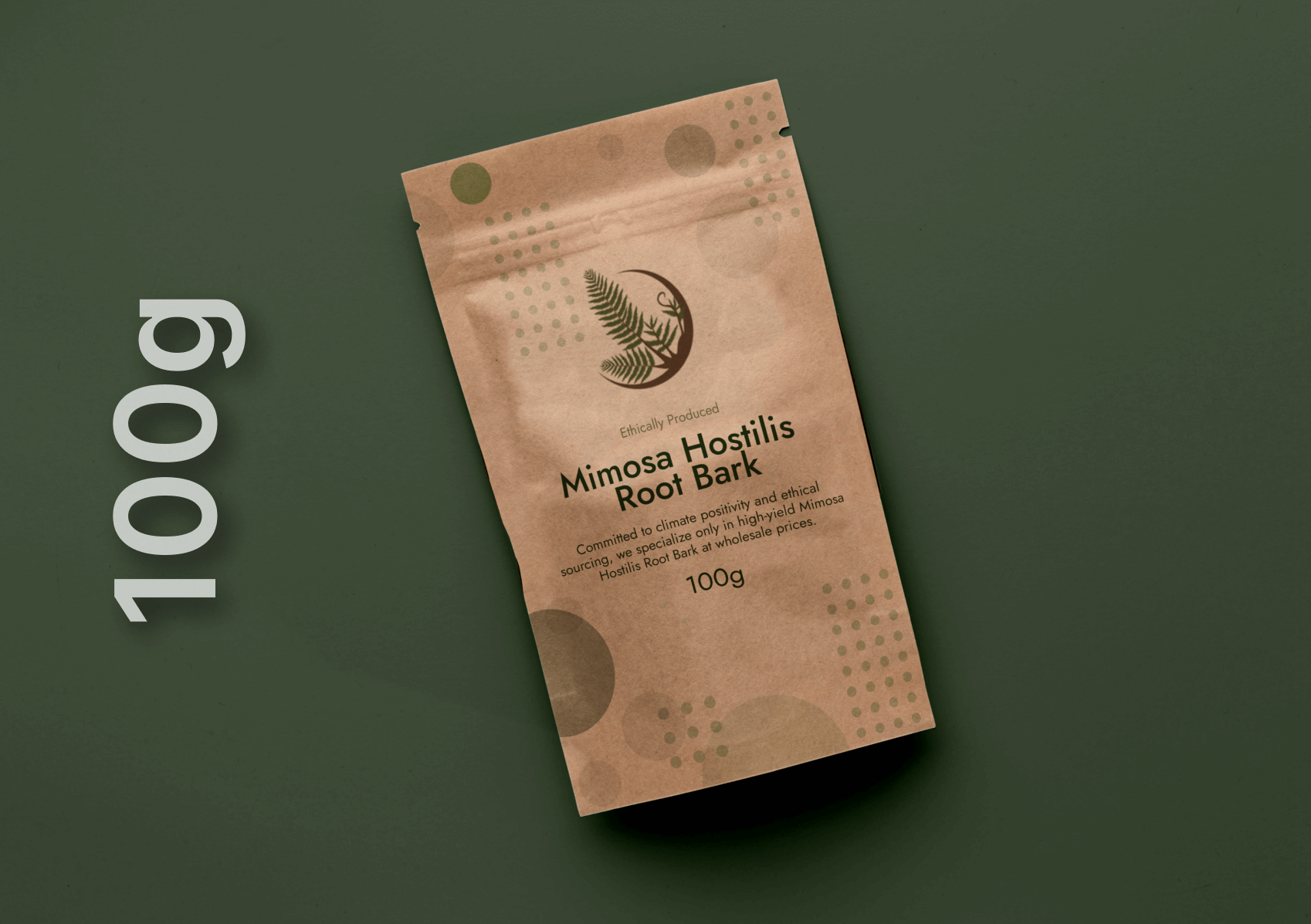Understanding Mimosa Hostilis Root Bark: The Basics
What is Mimosa Hostilis Root Bark?
Mimosa Hostilis Root Bark (MHRB) comes from the Mimosa tenuiflora tree, native to northeastern Brazil and southern Mexico. This remarkable tree produces bark rich in natural compounds that create stunning colors when used as a dye. Indigenous communities have used this bark for centuries to color textiles, leather goods, and ceremonial items.
The root bark contains high concentrations of tannins, which bind naturally to fibers and create lasting colors. These same compounds that make excellent dyes also give the bark its distinctive reddish-purple appearance when ground into powder.
The Science Behind Natural Dyeing with MHRB
The magic of Mimosa Hostilis as a natural dye lies in its chemical composition. Tannins make up approximately 20-30% of the bark’s content, giving it exceptional dyeing properties. These polyphenolic compounds create strong bonds with natural fibers, producing colors that resist fading over time.
The bark also contains flavonoids and other phenolic compounds that contribute to the color range. Depending on the preparation method and mordants used, MHRB can produce colors ranging from soft pinks to deep burgundy, and even browns and purples.
Research shows that natural dyes from MHRB demonstrate excellent lightfastness and washfastness when properly applied. This scientific backing supports what traditional dyers have known for generations – this bark creates reliable, beautiful colors.
Origins and Sustainable Sourcing
The Mimosa tenuiflora tree thrives in semi-arid regions of Brazil’s Caatinga biome and Mexico’s tropical dry forests. These hardy trees can regenerate their bark when harvested responsibly, making them a renewable resource for natural dyeing.
Sustainable harvesting involves taking only small sections of root bark from mature trees, allowing them to heal and continue growing. Many suppliers now work directly with local communities who have traditional knowledge of proper harvesting techniques.
Quality suppliers provide information about their sourcing practices, including harvest locations, tree age, and community partnerships. This transparency helps ensure that purchasing MHRB supports both environmental conservation and local economies.
Legal Considerations and Common Misconceptions
Mimosa Hostilis root bark is legal to purchase and use for dyeing purposes in most countries. However, regulations vary by location, so checking local laws before purchasing is important. The bark’s primary commercial applications are in natural dyeing, soap making, and traditional crafts.
Some confusion exists due to the bark’s historical use in traditional ceremonies. Modern commercial use focuses almost exclusively on its practical applications as a natural colorant and in cosmetic formulations. Reputable suppliers clearly market the product for these legitimate uses.
Market Data and Growing Demand
The global natural dyes market is experiencing significant growth, with projections showing a compound annual growth rate of 11-13% through 2028. This growth is driven by consumer demand for eco-friendly alternatives to synthetic dyes, which often contain harmful chemicals.
MHRB represents a growing segment of this market. Survey data indicates that 67% of textile artisans are interested in switching to natural dyes, with color quality and lightfastness being primary concerns. MHRB addresses both requirements effectively.
Price trends show MHRB becoming more accessible as supply chains improve. Quality root bark powder typically costs $15-25 per pound, making it competitive with other premium natural dyes while offering superior color results.
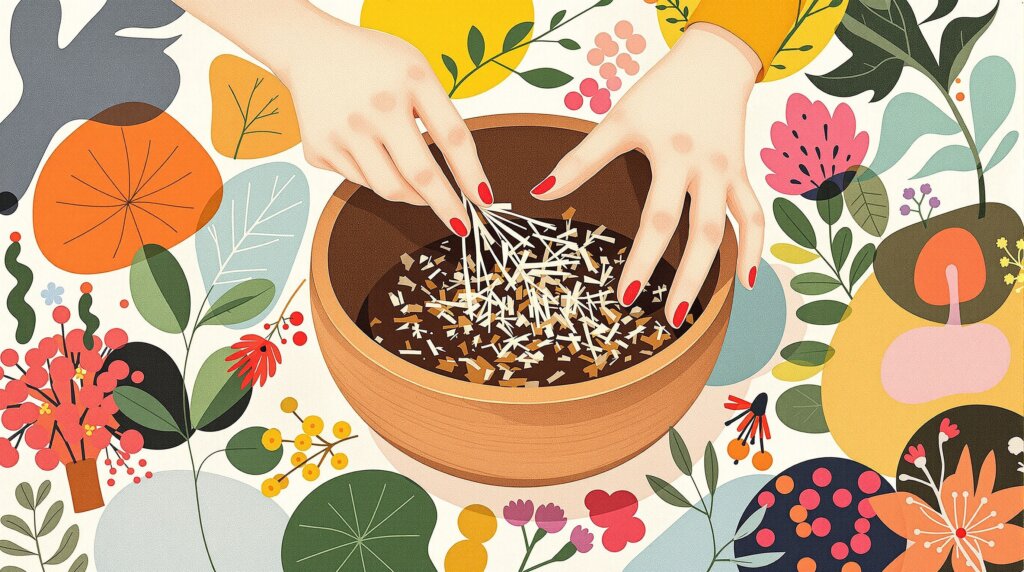
The Current Landscape of Mimosa Hostilis Use
Global Supply Chains and Quality Standards
Modern MHRB supply chains connect remote harvesting areas with international markets through a network of ethical suppliers. The best suppliers maintain direct relationships with harvesting communities, ensuring fair compensation and sustainable practices.
Quality standards have evolved to meet growing demand. Premium suppliers provide detailed specifications including moisture content (typically under 10%), mesh size for powdered bark, and origin documentation. These standards help ensure consistent results for dyers.
Traceability has become increasingly important. Leading suppliers can track their products from specific harvest regions to the end consumer, providing documentation that supports sustainable sourcing claims.
Identifying Quality MHRB for Dyeing
High-quality Mimosa Hostilis root bark powder displays several distinct characteristics. The color should be a rich reddish-purple to brown, indicating proper processing and storage. Fresh, quality bark powder has a slightly sweet, earthy aroma without musty or fermented odors.
Texture provides another quality indicator. Well-processed MHRB powder feels fine and consistent, without large chunks or excessive dust. The powder should flow freely, indicating proper moisture content and grinding.
Inner root bark typically produces stronger colors than outer bark, though both have dyeing applications. Quality suppliers specify which type they’re selling and provide extraction ratios – good MHRB should yield strong color from relatively small amounts.
Testing a small batch before committing to large quantities allows evaluation of color strength and quality. Professional dyers often request samples to assess how well the bark works with their specific techniques and fiber types.
Essential Preparation Methods and Techniques
Preparing Your Dye Bath
Creating an effective dye bath from Mimosa Hostilis requires proper extraction of the color compounds. The process begins with measuring the bark – typically 10-20% of the fabric weight provides good color depth, though this can be adjusted based on desired intensity.
Soaking the bark powder in room temperature water for 2-4 hours before heating improves color extraction. This initial soak allows water to penetrate the plant material thoroughly, releasing more tannins during the heating process.
Heating the mixture slowly to just below boiling point (around 180-190°F) extracts maximum color without degrading the compounds. Maintaining this temperature for 45-60 minutes creates a rich, concentrated dye bath. Straining out the plant material leaves a clear liquid ready for dyeing.
The dye bath can be used immediately or stored in the refrigerator for up to a week. Some dyers prefer to age their dye baths for 24-48 hours, believing this improves color development and evenness.
Mordanting Fibers for Best Results
Proper mordanting ensures that natural fibers accept and retain the dye effectively. While Mimosa Hostilis contains natural tannins that help bind to fibers, pre-mordanting typically improves color intensity and permanence.
Protein fibers like wool and silk often require only light mordanting or none at all when using MHRB, as the tannins bind naturally to these materials. A simple vinegar rinse can help open the fiber scales and improve dye penetration.
Cellulose fibers such as cotton and linen benefit from tannin mordanting followed by iron or aluminum mordants. This two-step process creates binding sites for the dye molecules, resulting in stronger, more permanent colors.
Common mordants for use with MHRB include:
- Aluminum sulfate for bright, clear colors
- Iron for deeper, darker shades
- Copper for green-tinged effects
- Cream of tartar as a softening agent
Dyeing Process Step-by-Step
The actual dyeing process requires attention to temperature, timing, and fiber handling. Pre-wet fibers enter the dye bath more evenly, preventing blotchy results. Room temperature or slightly warm water works best for initial immersion.
Gradually heating the dye bath with the fibers inside allows even color penetration. Raising the temperature slowly over 15-20 minutes prevents shocking the fibers and helps achieve uniform coloring.
Maintaining dyeing temperature (typically 160-180°F for most fibers) for 45-90 minutes allows complete color development. Gentle stirring every 10-15 minutes ensures even exposure to the dye solution.
Cooling the fibers in the dye bath overnight often intensifies colors and improves evenness. This extended contact time allows the dye molecules to fully bond with the fiber structure.
Color Results and Modification Techniques
Natural Color Range from MHRB
Mimosa Hostilis produces an impressive spectrum of colors depending on preparation methods, mordants, and fiber types. Without mordants, the bark typically yields soft pink to rose colors on wool and silk, while cotton and linen achieve lighter, more muted tones.
Aluminum mordants brighten the natural pink tones, creating vibrant rose and coral shades. These colors show excellent lightfastness and maintain their vibrancy through multiple washings.
Iron mordants dramatically shift the color toward purple and burgundy ranges. Different iron concentrations produce variations from soft lavender to deep wine colors. Iron can be added during dyeing or as a post-treatment modifier.
Copper mordants create unique brownish-red tones with subtle green undertones. These earthier colors work particularly well for natural fiber crafts and rustic textile projects.
Advanced Color Modification Methods
pH manipulation offers another avenue for color variation with Mimosa Hostilis dyes. Adding vinegar or citric acid to the dye bath shifts colors toward the red spectrum, intensifying pink and rose tones.
Alkaline conditions, created by adding soda ash or ammonia, push colors toward purple and blue ranges. This technique can produce unique lavender and mauve shades not achievable through mordanting alone.
Temperature variations during dyeing affect color development. Lower temperatures (120-140°F) tend to produce softer, more pastel shades, while higher temperatures intensify colors and improve penetration.
Sequential dyeing with other natural materials creates complex, layered colors. Overdyeing MHRB-colored fibers with indigo produces beautiful purples, while madder root adds depth and complexity to the pink tones.
Troubleshooting Common Issues
Uneven dyeing often results from inadequate fiber preparation or insufficient stirring during the process. Pre-wetting fibers completely and maintaining gentle but consistent agitation prevents streaky results.
Weak colors typically indicate insufficient bark concentration or poor extraction. Using older, improperly stored bark can also reduce color yield. Testing extraction strength before dyeing helps identify these issues early.
Color bleeding in finished textiles usually indicates inadequate mordanting or incomplete dye bonding. Proper mordant application and sufficient dyeing time resolve most bleeding issues.
Harsh or brittle fabric after dyeing suggests excessive heat or overly alkaline conditions. Maintaining proper pH and temperature ranges prevents fiber damage while achieving good color results.
Fiber Types and Compatibility
Working with Protein Fibers
Wool responds exceptionally well to Mimosa Hostilis dyes, often requiring minimal mordanting due to the natural affinity between tannins and protein fibers. Different wool types produce slight color variations – fine merino tends to take lighter, more even colors, while coarser wools may show more color variation.
Silk creates some of the most beautiful results with MHRB, producing lustrous colors that highlight the fiber’s natural sheen. Both cultivated and wild silks work well, though wild varieties like tussah may show more color variation due to their irregular structure.
Alpaca and other luxury protein fibers dye similarly to wool but may require slightly longer processing times due to their dense fiber structure. The natural colors of these fibers influence final results – white fibers produce the truest colors, while colored fibers create unique blended effects.
Temperature control is particularly important with protein fibers to prevent damage. Keeping temperatures below 185°F protects the fiber structure while allowing good dye penetration.
Cellulose Fiber Considerations
Cotton requires more intensive preparation than protein fibers but can achieve excellent results with Mimosa Hostilis. Scouring cotton thoroughly removes oils and sizing that interfere with dye uptake. Following with tannin and aluminum mordanting creates the best foundation for strong, lasting colors.
Linen’s looser weave structure allows good dye penetration, often producing slightly deeper colors than cotton. The fiber’s natural variations create interesting color effects that many dyers find appealing.
Hemp and other bast fibers work similarly to linen, requiring good mordanting but producing attractive results. These sustainable fibers pair well with natural dyes for eco-conscious textile projects.
Cellulose fibers generally require higher bark concentrations – 15-25% of fiber weight compared to 8-15% for protein fibers. The extra material compensates for the lower natural affinity between tannins and cellulose.
Synthetic and Blended Fabrics
Pure synthetic fibers like polyester, nylon, and acrylic do not accept natural dyes effectively. The chemical structure of these materials lacks binding sites for tannin molecules, resulting in little to no color uptake.
Natural-synthetic blends produce partial dyeing effects, with only the natural fiber portion accepting color. This can create interesting heathered effects in fabrics with substantial natural fiber content (typically 50% or higher).
Some synthetic fibers may benefit from special pre-treatments, but these often involve harsh chemicals that contradict the environmental benefits of natural dyeing. Most natural dyers prefer working exclusively with natural fibers.
Safety Considerations and Best Practices
Personal Protective Equipment
Working with Mimosa Hostilis powder requires basic safety precautions to protect skin, eyes, and respiratory system. Fine powder can become airborne during mixing, making dust masks advisable when handling dry materials.
Nitrile or latex gloves prevent skin staining and protect against potential sensitivities. While MHRB is generally safe, some individuals may experience skin irritation from direct contact with concentrated dye baths.
Safety glasses protect eyes from splashing during dye bath preparation and mordanting processes. Hot dye solutions can cause serious injury if splashed into eyes.
Aprons or old clothing protect against inevitable spills and splashes. MHRB creates permanent stains on most fabrics, making protective clothing essential.
Workspace Setup and Ventilation
Adequate ventilation prevents accumulation of steam and any vapors from mordanting chemicals. While MHRB itself produces no harmful fumes, mordants like ammonia require good air circulation.
Non-reactive work surfaces resist staining and chemical damage. Stainless steel, glass, or plastic surfaces work well, while wood and other porous materials absorb stains permanently.
Easy cleanup becomes important when working with staining materials. Having cleanup supplies readily available prevents permanent stains on work surfaces and equipment.
Separate dyeing equipment from food preparation areas prevents cross-contamination. Using dedicated pots, stirring utensils, and measuring tools for dyeing ensures safety.
Waste Disposal and Environmental Responsibility
Used MHRB dye baths can often be disposed of safely in most municipal sewage systems, as the natural materials biodegrade readily. However, checking local regulations ensures compliance with disposal requirements.
Mordant-containing solutions require more careful disposal. Iron and aluminum solutions can typically go down drains in small quantities, but copper-containing waste may need special handling.
Spent bark material makes excellent compost addition after use. The organic material breaks down quickly and adds nutrients to compost systems.
Minimizing waste through careful measurement and reuse of dye baths reduces environmental impact. Many dye baths can be used multiple times with gradually lighter results.
Equipment and Tools for Natural Dyeing
Essential Dyeing Equipment
Stainless steel pots provide the best results for natural dyeing, as they don’t react with tannins or mordants. Enamel pots work well as alternatives, but any chips in the coating can cause problems. Aluminum pots should be avoided as they can affect colors unpredictably.
Accurate scales are crucial for consistent results. Digital scales that measure in grams provide the precision needed for proper bark-to-fiber ratios and mordant calculations. Kitchen scales work fine for most home dyeing projects.
Thermometers help maintain optimal dyeing temperatures. Instant-read digital thermometers work well, though floating dial thermometers designed for brewing also provide good results.
Strainers remove bark particles from dye baths, preventing specks and uneven coloring on finished fabrics. Fine mesh strainers or cheesecloth work effectively for this purpose.
Wooden or plastic stirring utensils prevent damage to delicate fibers during dyeing. Metal utensils can snag fabrics and may react with some mordants.
Measuring and Mixing Tools
Graduated measuring cups in various sizes help accurately portion dye baths and mordant solutions. Glass or plastic measuring tools resist staining better than metal alternatives.
pH test strips or digital pH meters allow monitoring of dye bath conditions. Many color modifications depend on specific pH ranges, making these tools valuable for advanced techniques.
Mixing containers should be large enough to handle full dye bath volumes. Food-grade plastic containers work well and resist staining better than some other materials.
Measuring spoons in multiple sizes help portion small amounts of mordants and modifiers accurately. Dedicated measuring tools prevent cross-contamination with food preparation.
Storage and Organization
Airtight containers preserve MHRB powder quality during storage. Glass jars, plastic containers with tight lids, or vacuum-sealed bags prevent moisture absorption and maintain potency.
Proper labeling prevents confusion and ensures safety. Labels should include contents, concentration, and date of preparation for prepared solutions.
Cool, dry storage areas protect bark powder from degradation. Avoiding temperature fluctuations and direct sunlight helps maintain color strength over time.
Organization systems help track supplies and results. Many dyers maintain notebooks recording recipes, results, and modifications for future reference.
Advanced Applications and Creative Techniques
Resist Techniques and Pattern Creation
Tie-dye techniques work beautifully with Mimosa Hostilis dyes, creating organic patterns in soft pink and rose tones. Traditional methods like binding with string or rubber bands create classic circular patterns, while more complex folding techniques produce geometric designs.
Shibori methods pair exceptionally well with MHRB colors. Pole-wrapping, pleating, and binding create sophisticated patterns that highlight the natural beauty of these earth-tones. The relatively gentle dyeing process preserves delicate resist patterns.
Wax resist techniques produce fine detail work with MHRB dyes. The lower dyeing temperatures required for natural dyes work well with traditional batik waxes, preventing unwanted melting during the process.
Clamp resist methods using wooden blocks, C-clamps, or binding create sharp geometric patterns. These techniques work particularly well with the strong tannin content in MHRB, producing clean pattern edges.
Surface Design Applications
Direct application techniques allow precise color placement on fabrics. Painting concentrated MHRB dye solutions directly onto fabric creates watercolor-like effects, especially on silk and fine wool.
Stamping and block printing work well with thickened MHRB dyes. Adding natural thickeners like guar gum or cornstarch creates printable consistency while maintaining color quality.
Screen printing applications require careful preparation but produce excellent results. The natural tannin content helps the dye adhere well to fabrics, creating crisp printed designs.
Gradient effects can be achieved through controlled dye application or progressive dilution techniques. These create subtle color transitions that highlight the natural beauty of MHRB colors.
Combination with Other Natural Dyes
Layering MHRB with other natural dyes creates complex, rich colors impossible to achieve with single dyes. Indigo overdyeing produces beautiful purples, while madder root adds depth to pink tones.
Sequential dyeing techniques build color complexity gradually. Starting with light MHRB colors and adding other natural dyes creates unique color combinations with good lightfastness.
Simultaneous dyeing with compatible natural materials can produce interesting effects. Combining MHRB with logwood or brazilwood in the same dye bath creates rich, complex purples and reds.
Color mixing principles apply to natural dyes, though results may differ from synthetic color theory. Experimentation and documentation help develop personal color palettes using MHRB as a base.
Preservation and Storage of Dyed Materials
Proper Finishing Techniques
Thorough rinsing after dyeing removes excess color and chemical residues that could affect longevity. Cool water rinses work best initially, followed by gradually warmer water to ensure complete removal of unbonded dye molecules.
Gentle washing with pH-neutral detergents helps set colors and removes any remaining mordant residues. Specialized wool detergents work well for all natural fibers, providing cleaning without harsh chemicals.
Proper drying techniques preserve both fiber quality and color intensity. Air drying away from direct sunlight prevents fading while protecting fiber structure from heat damage.
Final pressing or steaming can improve fabric hand and appearance. Using appropriate temperatures for each fiber type prevents damage while creating professional-looking results.
Long-term Storage Considerations
Clean, completely dry textiles store better and resist insect damage and mildew. Ensuring thorough drying before storage prevents problems that can damage both fibers and colors.
Acid-free storage materials protect against chemical degradation over time. Tissue paper, boxes, and storage containers designed for textile preservation provide the best protection.
Temperature and humidity control prevent fiber degradation and color changes. Cool, stable conditions with moderate humidity (45-55%) provide optimal storage environments.
Protection from light exposure prevents fading during storage. Dark storage areas or lightproof containers maintain color intensity over extended periods.
Care and Maintenance of Finished Items
Gentle washing practices extend the life of naturally dyed textiles. Hand washing in cool water with mild detergents preserves both colors and fibers better than machine washing.
Air drying away from direct sunlight prevents UV damage that causes fading. Indoor drying or shaded outdoor areas provide protection while allowing proper drying.
Periodic color refreshing may be needed for heavily used items. Light overdyeing with dilute MHRB solutions can restore faded colors without significantly darkening the original shade.
Professional conservation techniques can restore valuable or damaged pieces. Textile conservators have specialized knowledge of natural dye properties and appropriate restoration methods.
Conclusion
Mimosa Hostilis root bark offers natural dye enthusiasts an excellent starting point for exploring botanical colors. Its high tannin content produces reliable, beautiful results across a wide range of natural fibers, while its sustainable sourcing supports environmental responsibility.
The versatility of MHRB shines through its ability to produce everything from soft pink tones to rich burgundy colors, depending on mordants and techniques used. This flexibility makes it valuable for both beginners learning basic dyeing principles and experienced artisans creating complex color effects.
Success with Mimosa Hostilis dyeing depends on understanding proper preparation techniques, fiber compatibility, and safety considerations. Taking time to learn these fundamentals ensures consistent results and safe working conditions.
As interest in sustainable and natural textile practices continues growing, skills in natural dyeing become increasingly valuable. MHRB provides an accessible entry point into this traditional craft while producing results that rival synthetic alternatives in beauty and durability. The connection to traditional knowledge and environmental stewardship adds meaning beyond the practical benefits of creating beautiful, naturally colored textiles.
Frequently Asked Questions
What is mimosa hostilis and why is it good for natural dyeing?
How do I prepare mimosa hostilis root bark for dyeing?
What colors can I get from mimosa hostilis dye?
Can I use mimosa hostilis dye on all types of fabric?
Where can I buy mimosa hostilis root bark for dyeing?

